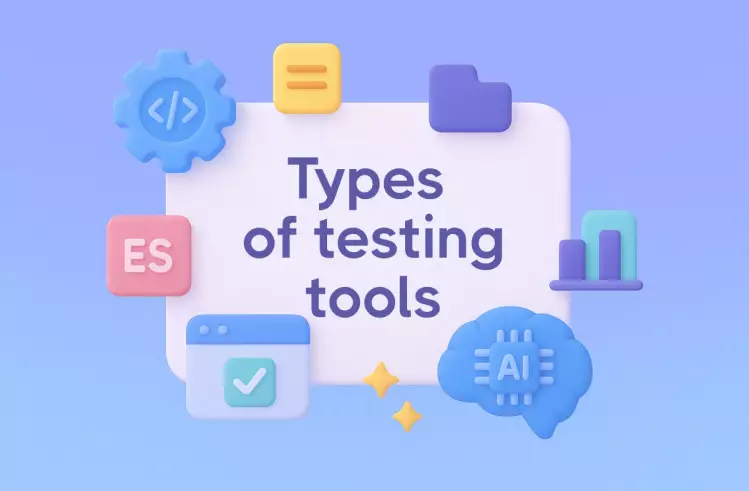Opting for BDD test cases in agile software development to translate business requirements into good software products is an attractive option.
This helps enforce a test-first mindset and provides strong collaboration between technical and non-technical specialists as well as solves the problem of communication among them. With that in mind, the adoption of BDD test cases has become critical for companies aiming to improve collaboration within their development teams, prioritize business interests, bring new services or products to market faster, and strive for the highest levels of quality. Let’s reveal what exactly is behavior-driven development (BDD test) cases are in agile software development, and what are the arguments for and against writing them in agile software development.
What’s exactly BDD testing in agile software development?
Behavior-driven development testing or BDD testing is known as a software testing method that combines technical aspects and business interests when testing actual user behavior in agile software development. BDD testing means creating test cases using simple text language. Derived from requirements in specification, the BDD scenario describes the product’s behavior from the user’s perspective. This helps the development team easily view the current requirements as well as enables QA teams to test the product properly. In addition to that, the written scenarios can be converted into automated tests with ease.
Based on the Given When Then structure, teams create BDD tests scenarios in a simple and understandable language and monitor them with ease using a BDD testing framework. With that in mind, engineers can translate business requirements into the right software and better collaboration with all the parties involved.
Moreover, it allows even non-technical-savvy employees to be in the know about what’s going on in the software project. By incorporating BDD testing framework, you can significantly improve collaboration between key stakeholders on the project and make the process transparent.
Discover some essential characteristics of the behavior-driven development testing or BDD testing:
- Tests are written in human-friendly descriptive English language
- BDD tests are certainly user-focused
- BDD tests are built from spec files to speed up the development process
BDD Testing: How it works
Before implementing the whole project, a key stakeholder discusses with the developers and testers all the product requirements that should be written in the form of scenarios. Then, those scenarios are attached as feature files in the automation testing tool and represent the automated acceptance tests. Basically, there are three key elements in any BDD testing scenario:
- Given (Context)
- When (Action)
- Then (Outcome)
In addition to that, you can use And after any of the descriptors if you require more information in bdd scenarios.
- Given (context),
- And (some more context),
- When (action/event),
- And (further action/event),
- Then (outcome)
- And (further outcome)
Let’s take a closer look at how BDD test cases work in BDD practices.
Feature: Login
As a new user
I want to log in to the website
So that the system can remember my data
Scenario #1: Successful Log in to the website
Given A user brings up the login pop-up
When A user clicks Sign-in
And A user enters a valid email <email> and password <password>
And A user clicks Sign-in
Then A user should be successfully logged into the site
Scenario #2: Unsuccessful Log in to the website
Given A user brings up the login pop-up
When A user enters an invalid email <email> and password <password>
And A user clicks Sign-in
Then A user should not be successfully logged into the siteBest Practices to follow while writing BDD test cases
As the competition evolves, there is a need to be dynamic with best practices as well to bring the future product to life and reap the benefits. Here are some of best practices to keep in mind when writing BDD test cases:
- By opting for business terminology, focused test scenarios can help close the gap between the technical and non-technical stakeholders in the team. This approach aligns well with perform BDD testing, ensuring that tests are not only technically accurate but also reflect the expected business outcomes and user behaviors.
- Having the end-user or defined requirements in mind is a must when writing BDD scenarios test. Additionally, it’s critical to use real data to understand user behavior. This helps you eliminate forgotten requirements and lessens the chance of missing out on some essential information. When integrated with BDD testing frameworks like Cucumber or SpecFlow, these practices ensure that each scenario not only meets technical criteria but also remains aligned with user expectations throughout the development cycle.
- When writing BDD testing cases, it’s important to consider different viewpoints and inputs. That’s why the whole team should work together to produce them. This contributes to a better understanding of the user’s needs, meeting them, and properly testing them throughout the development process.
- Technicians should concentrate on what the future product does rather than how it does. In addition to that, they should avoid writing unnecessary test scenarios with irrelevant steps to concentrate on the essentials, leveraging the principles of BDD testing.
Benefits of Behavior Driven Development (BDD) Tests Cases in agile software development
Here we quickly grasp some primary benefits that will help you speed up time to market and position your business for success. Let’s dive into the details below, leveraging automated tests:
- Effective communication and collaboration. With a declarative style, technical and non-technical members of the team can easily understand the scope of the test and better communicate. Moreover, it provides the team with in-depth visibility of how they are progressing towards targets. For example, when a user enters invalid credentials, the test scenario clearly outlines the expected behavior and facilitates comprehensive discussions on error handling and user feedback mechanisms.
- Faster product delivery. Writing BDD testing cases opens up ample opportunity for closing the gap between technology and business stakeholders. This helps you increase the speed of development thanks to fast test execution as well as automated cases enable a shorter software development cycle, frequent releases, and quick changes and updates that significantly speeds up time to market. By aligning with user stories, BDD testing ensures that each feature or enhancement meets user expectations and business requirements, facilitating a streamlined development process and faster delivery of high-quality software products.
- High quality and performance. Only by running thousands of BDD test cases simultaneously can you make sure that a stable and functionally robust software product is delivered to the end-user. Moreover, it helps you achieve high-quality software that adheres to defined business requirements, leveraging comprehensive BDD scenarios. When integrated with effective error message, these scenarios ensure that the software not only meets functional criteria but also provides clear and actionable feedback to users when issues arise.
- Reduced human errors. When any human error occurs in the testing process, it can lead to the loss of the company’s reputation. You can minimize human error and make your testing process more efficient and reliable thanks to BDD test cases.
- Speed of return. The team not only translates business needs into BDD tests but keeps the voice of the stakeholders at the heart of all they do and ensures flawless delivery. With BDD scenarios cases, you can boost the testing process that contributes to launching your software product as fast as possible. As a result, you start providing value to your customers that fosters a quicker ROI.
Limitations of BDD Test Cases in agile software development
Every approach has its disadvantages that should inform your decision when it comes to writing BDD testing cases. Let’s take a closer look at them below:
- Highly collaborative behavior. Taking advantage of writing BDD test cases can be impossible if business owners are unable to collaborate, take part in the discussions, and provide prompt and ongoing feedback.
- Accurate and meticulous project requirements. Poorly structured feature files and scenarios can give rise to considerable difficulties for QA teams when writing BDD cases. That’s why it’s critical to polish documentation and specify the requirements from the very start, ensuring clarity and precision in BDD scenarios.
- High learning curve. QA engineers should have great technical skills and knowledge to produce BDD test cases. Understanding the structure and syntax of feature file is essential in effectively documenting test scenarios and ensuring clarity and consistency across the testing process.
Agile-driven environment only. BDD test case approach is not applied if your team opts for waterfall principles when delivering software products or services.
Bottom line: Ready to start testing with Testomat.io?
Writing BDD test cases is essential for companies, both large and small, to speed up the testing process. This helps them deliver outstanding software quickly and stay competitive in the industry. By investing in the right testing tool and measuring its potential, you can reap the benefits of testing and drive business growth. That’s where the testomat.io software solution comes into play. The value of incorporating this software product can be significant with respect to both time to market and meeting business needs.








